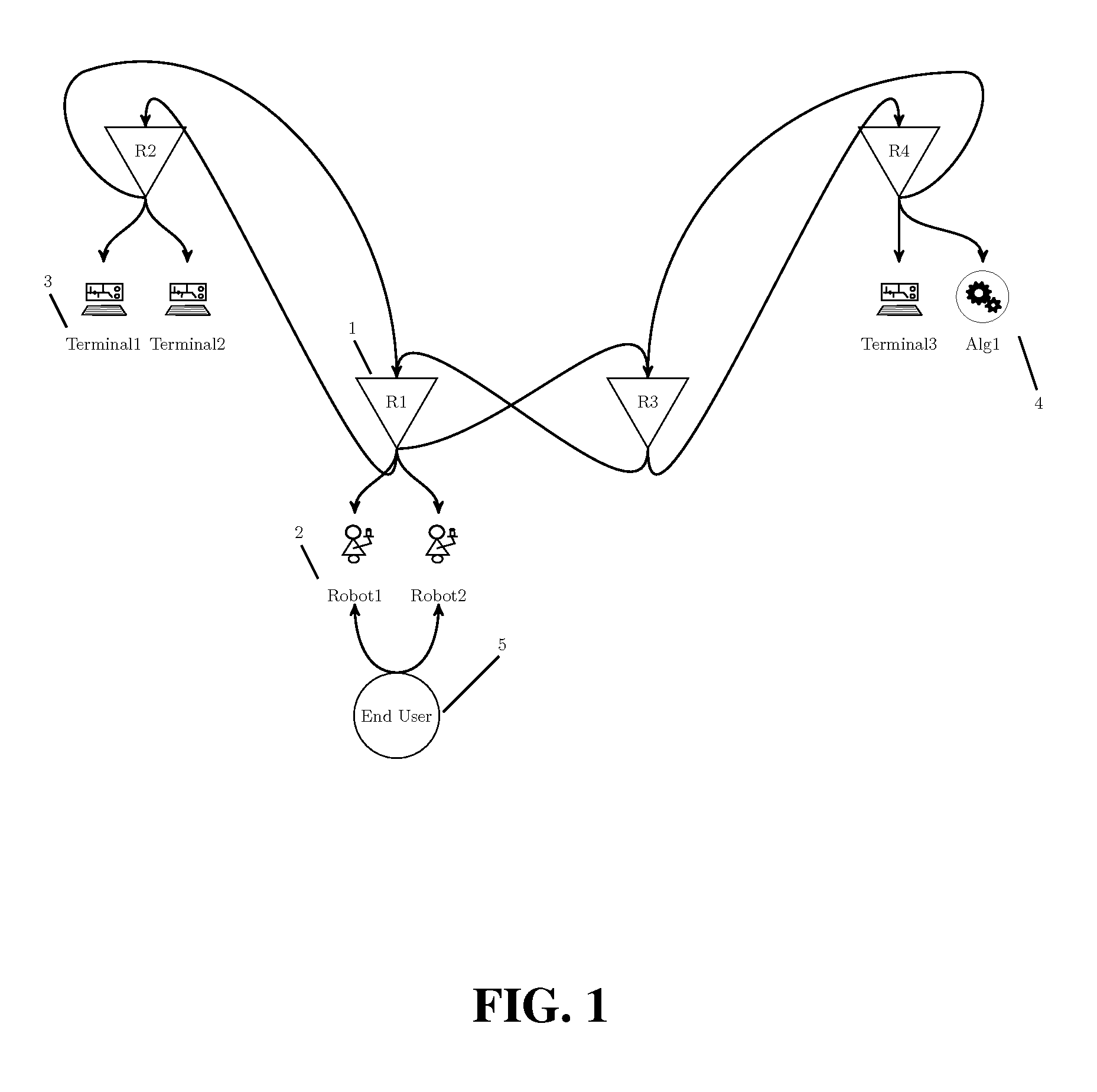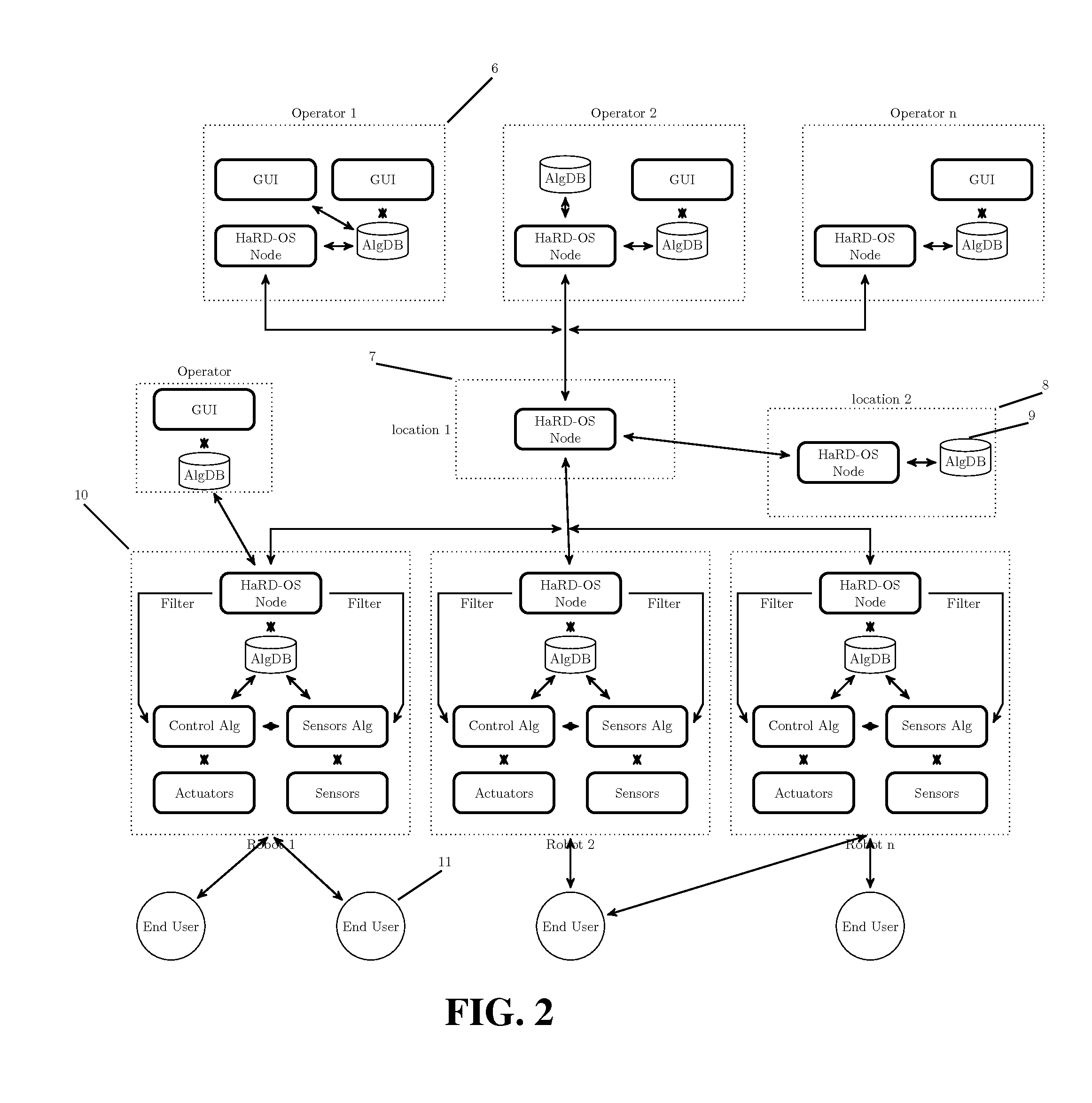Human and robotic distributed operating system (HaRD-OS)
- Summary
- Abstract
- Description
- Claims
- Application Information
AI Technical Summary
Benefits of technology
Problems solved by technology
Method used
Image
Examples
Embodiment Construction
[0030]In the following detailed description, numerous details, examples, and embodiments are set forth and described. The described methods and systems are not limited to the embodiments set forth, and may be practiced without some of the specific details and examples discussed. Also, reference is made to the accompanying figures, which illustrate specific embodiments in which the methods and systems can be practiced. It is to be understood that other embodiments can be used and structural changes can be made without departing from the scope of the embodiments herein described.
[0031]FIG. 1 shows an exemplary architecture for a preferred embodiment of the human and robot distributed operating system (HaRD-OS). In this scope, the human requesting the robots [2] to complete various tasks is referred to as the end user [5], while the humans controlling / communicating with the robots [2] to accomplish the task are referred to as the operators [3]. Algorithms [4] can also control the robot...
PUM
 Login to View More
Login to View More Abstract
Description
Claims
Application Information
 Login to View More
Login to View More - R&D
- Intellectual Property
- Life Sciences
- Materials
- Tech Scout
- Unparalleled Data Quality
- Higher Quality Content
- 60% Fewer Hallucinations
Browse by: Latest US Patents, China's latest patents, Technical Efficacy Thesaurus, Application Domain, Technology Topic, Popular Technical Reports.
© 2025 PatSnap. All rights reserved.Legal|Privacy policy|Modern Slavery Act Transparency Statement|Sitemap|About US| Contact US: help@patsnap.com



